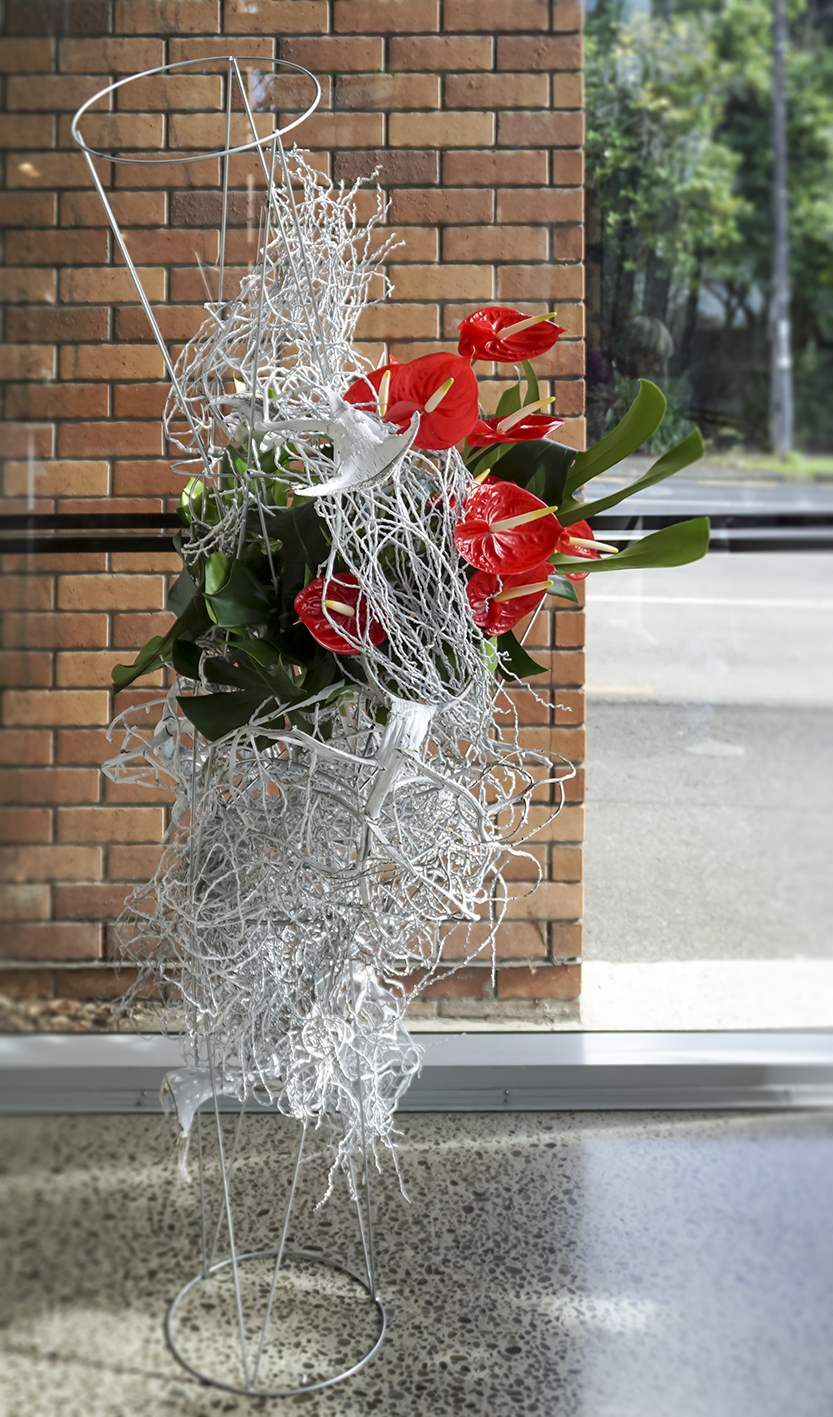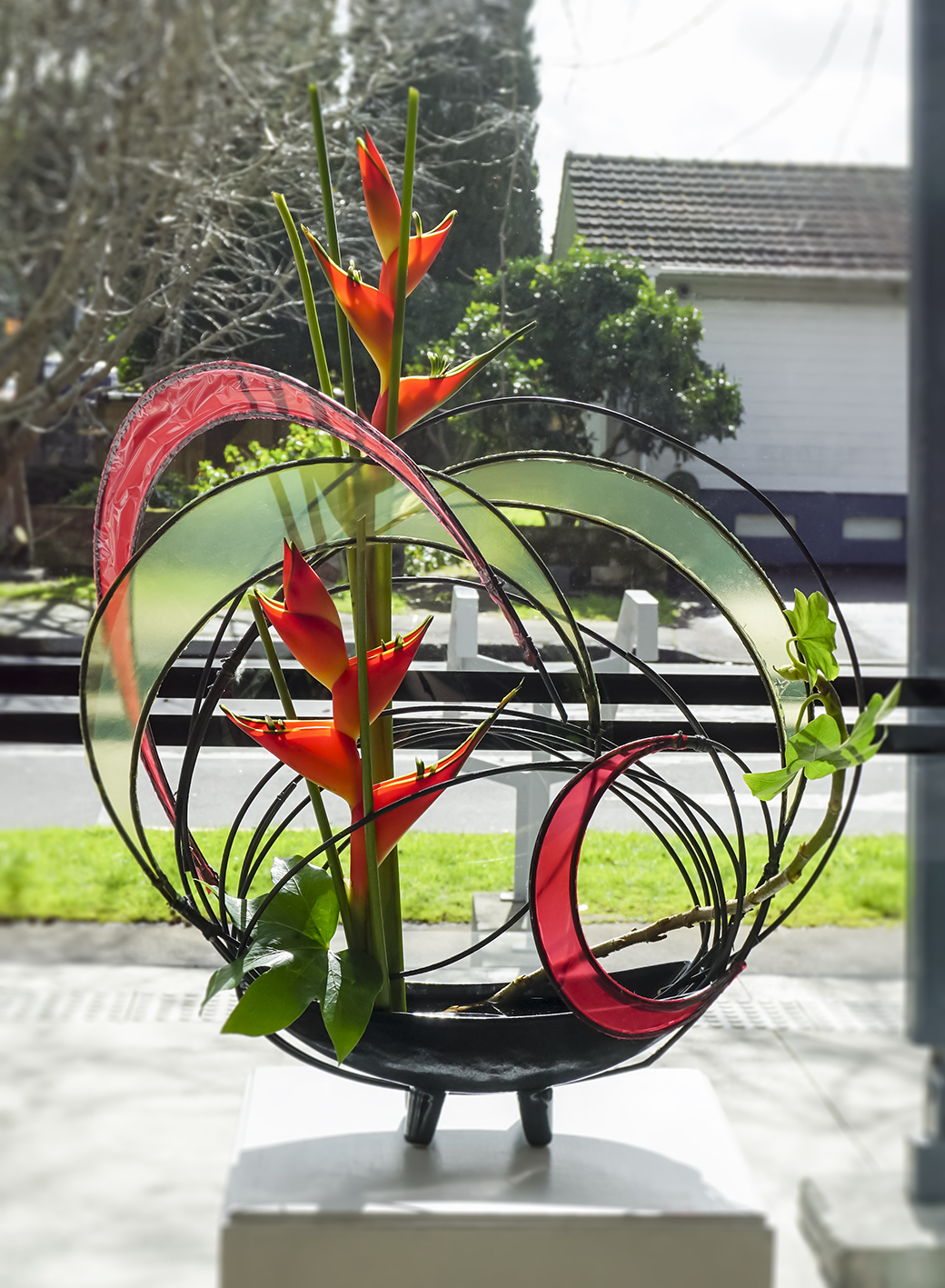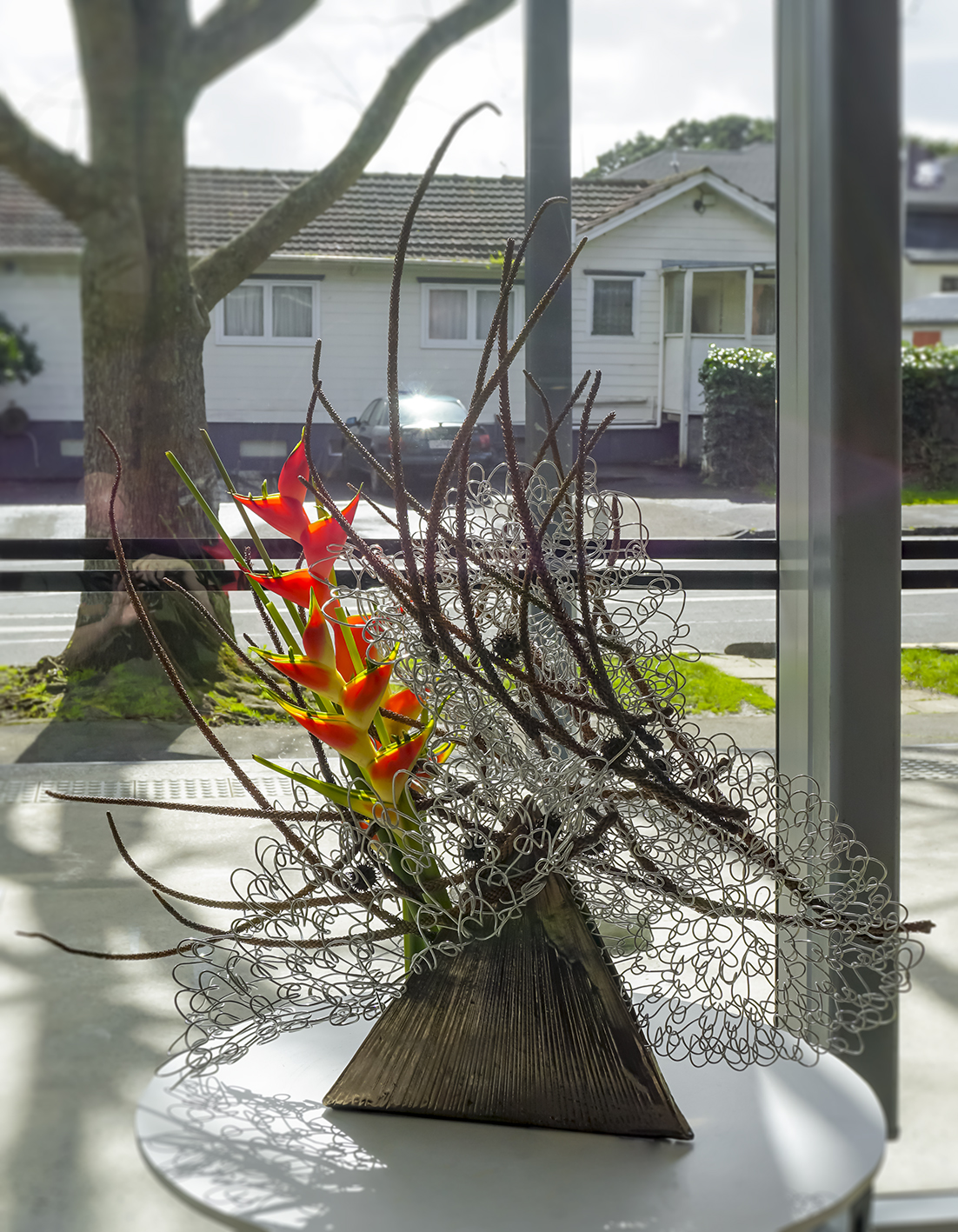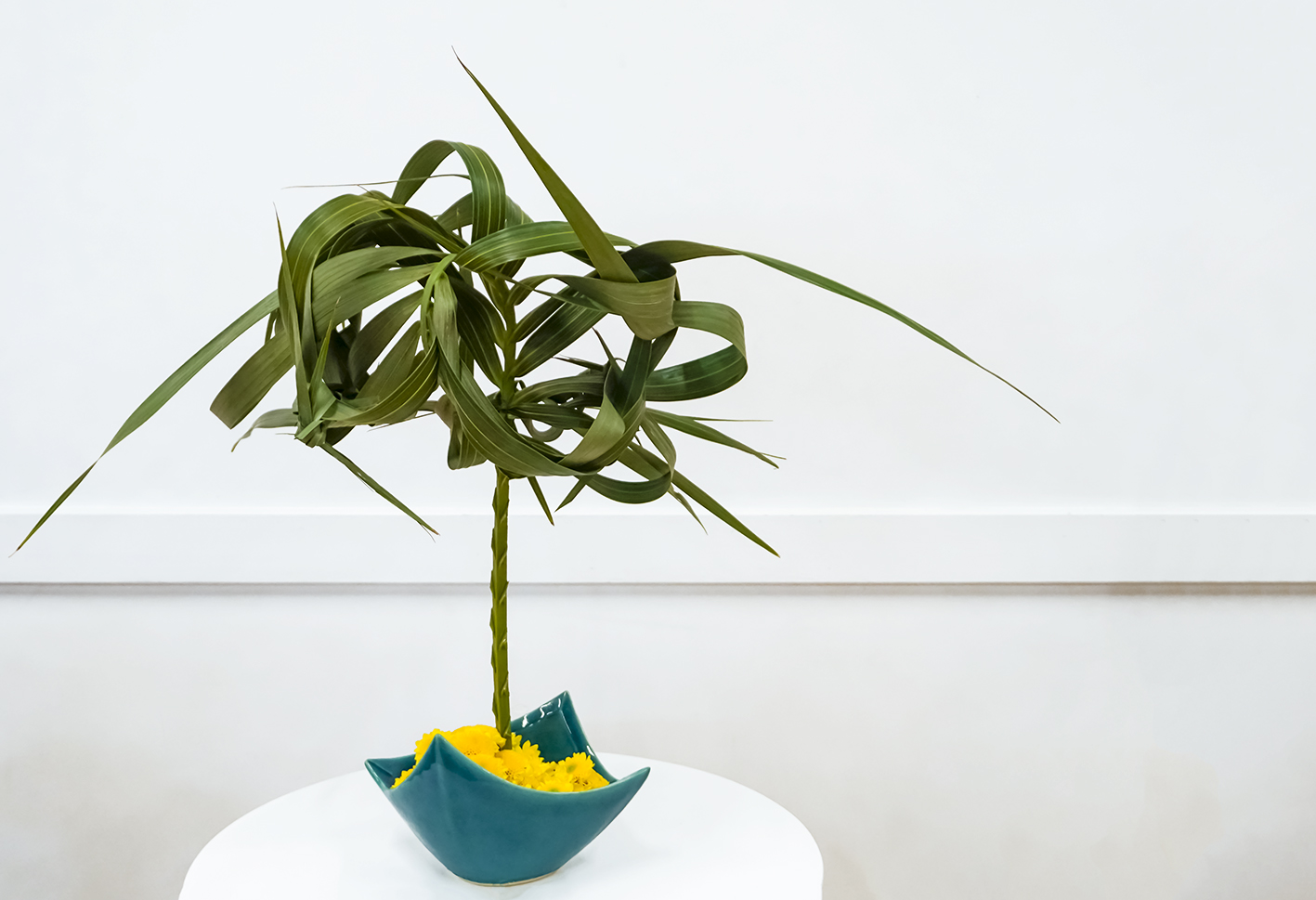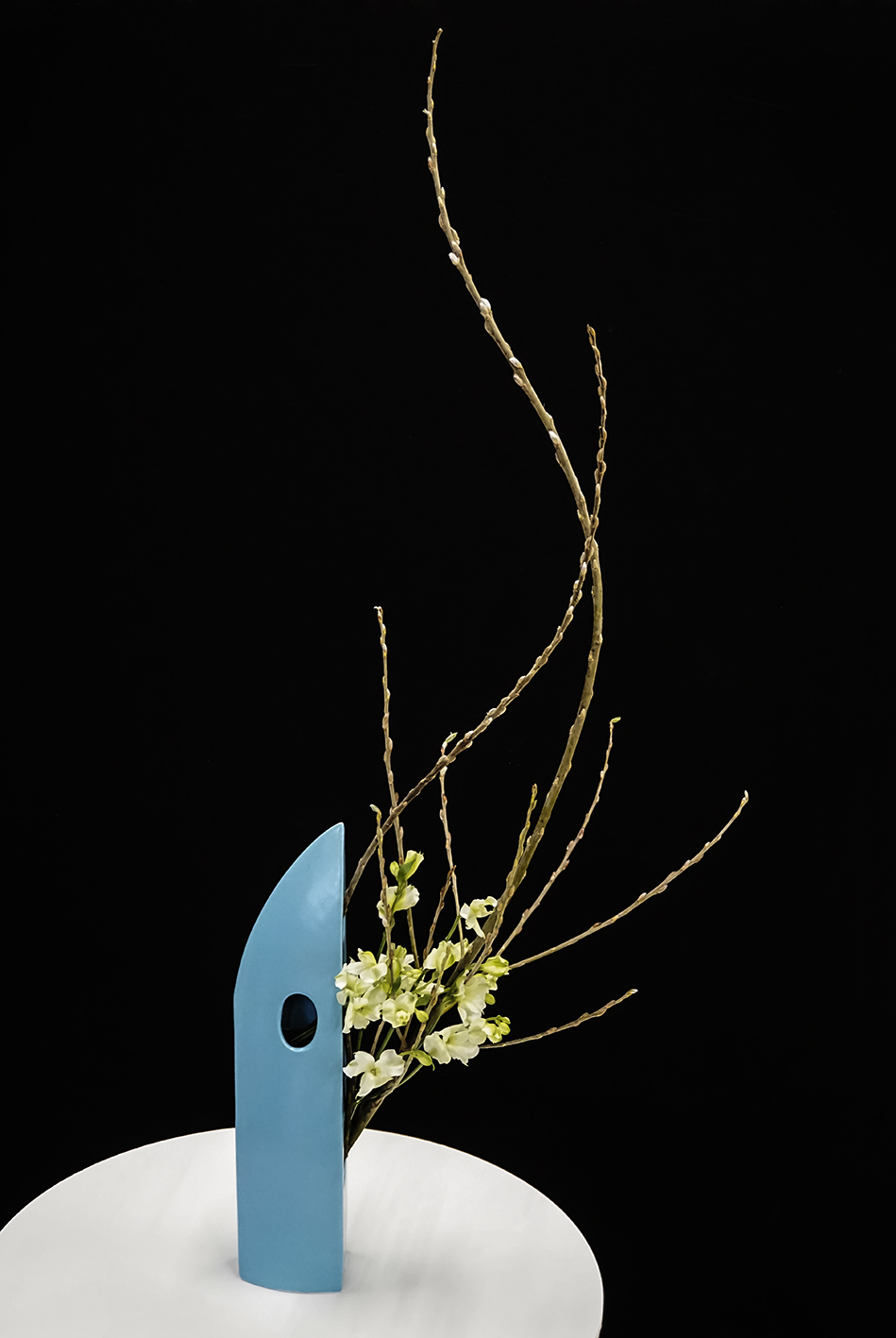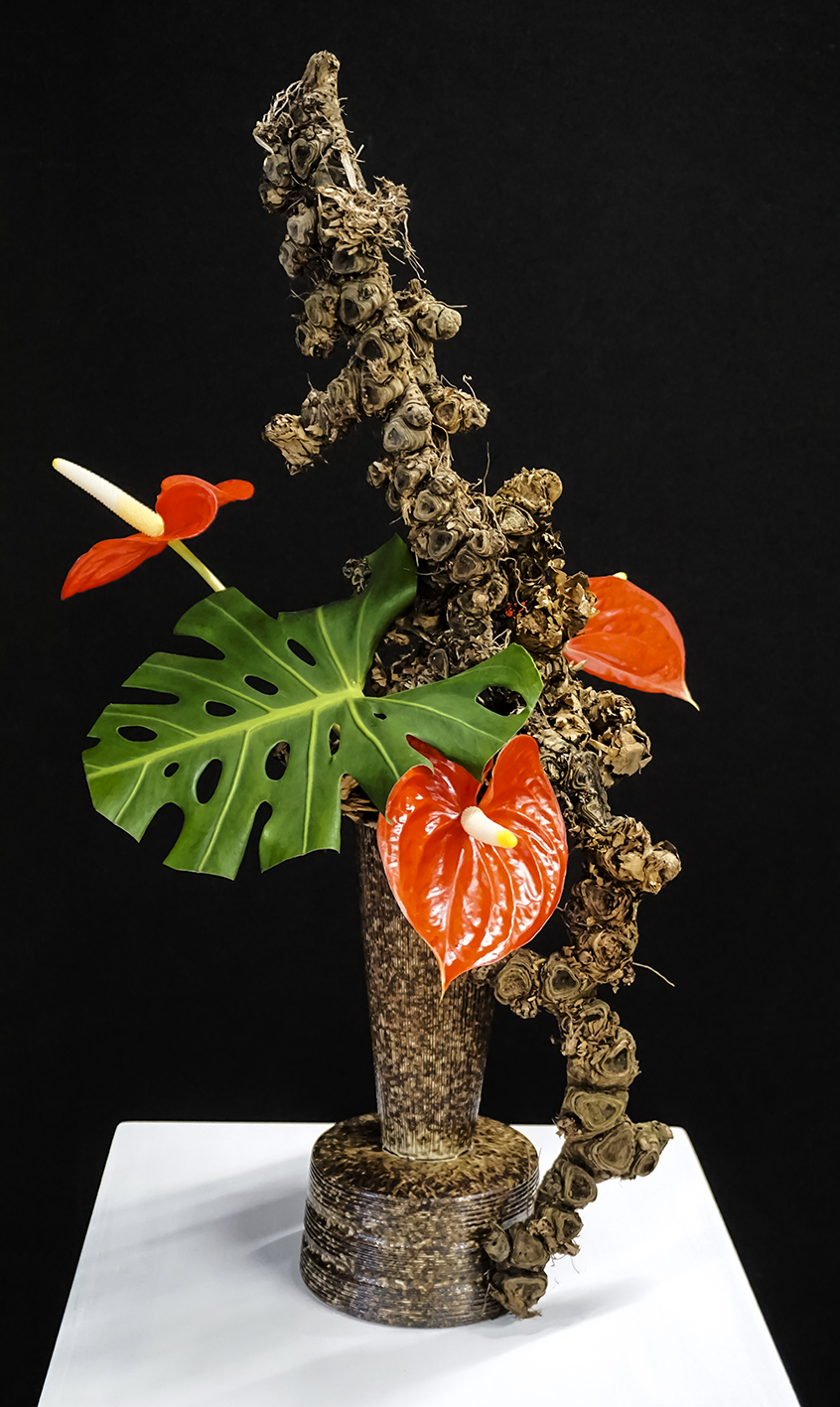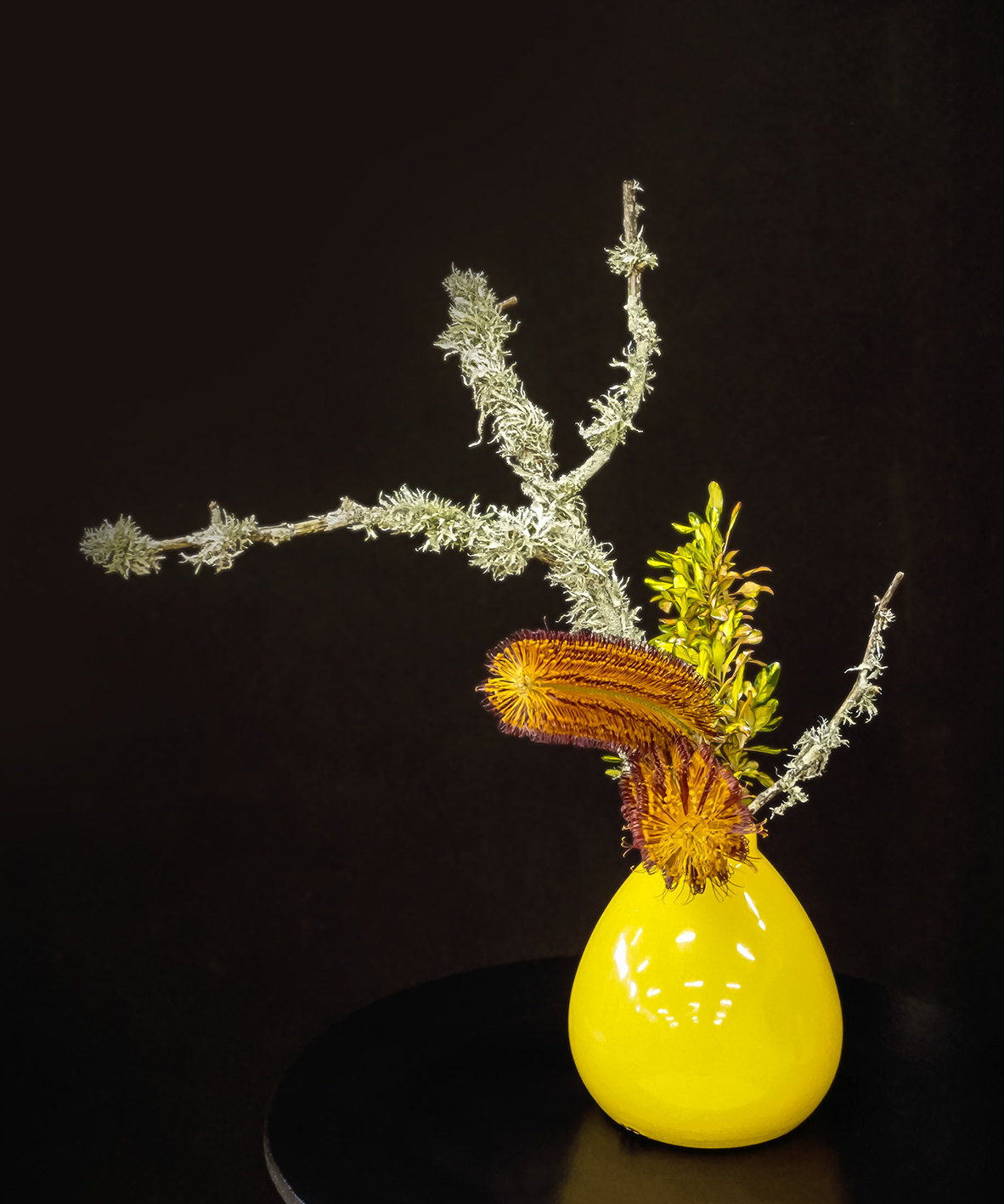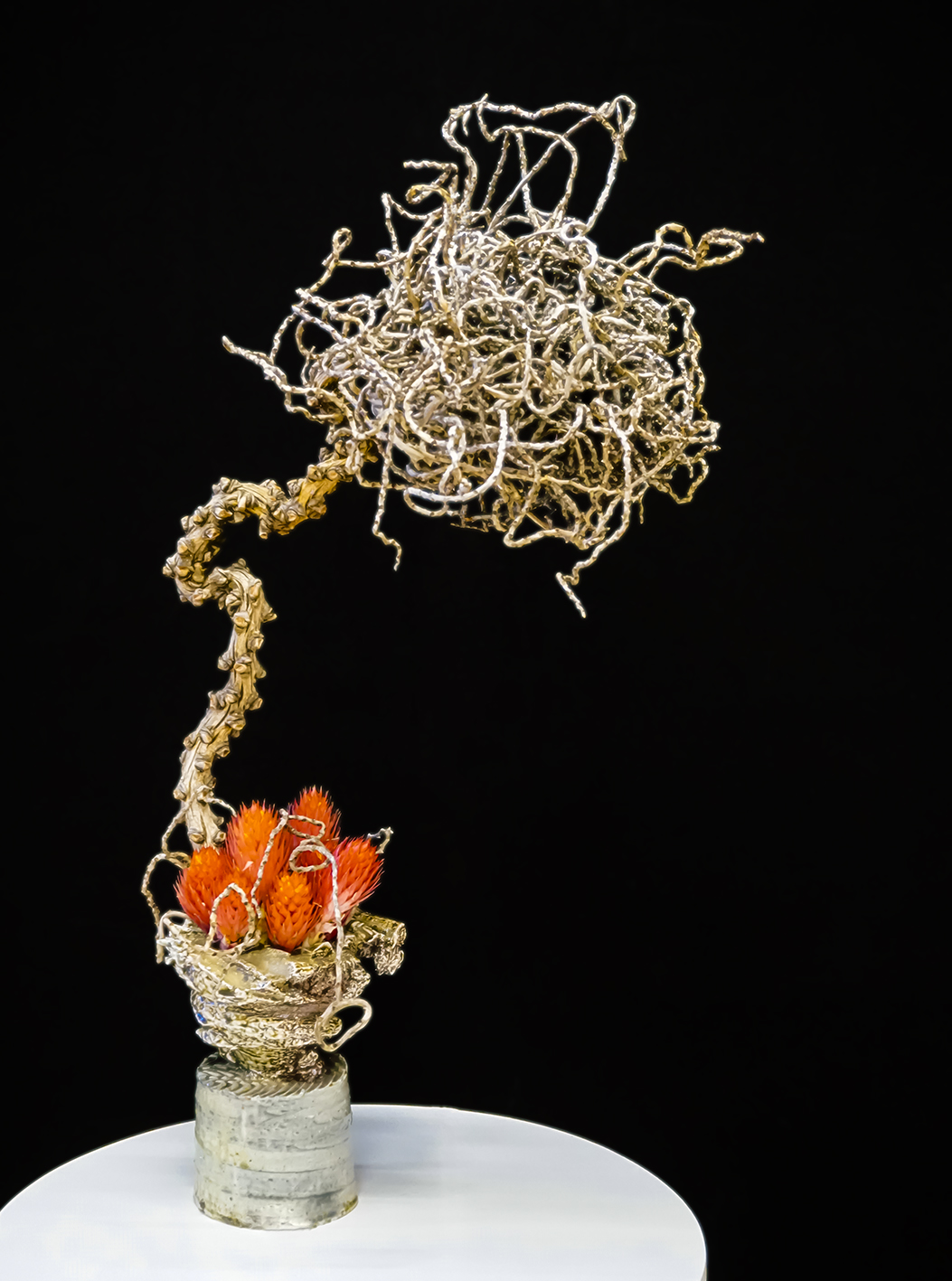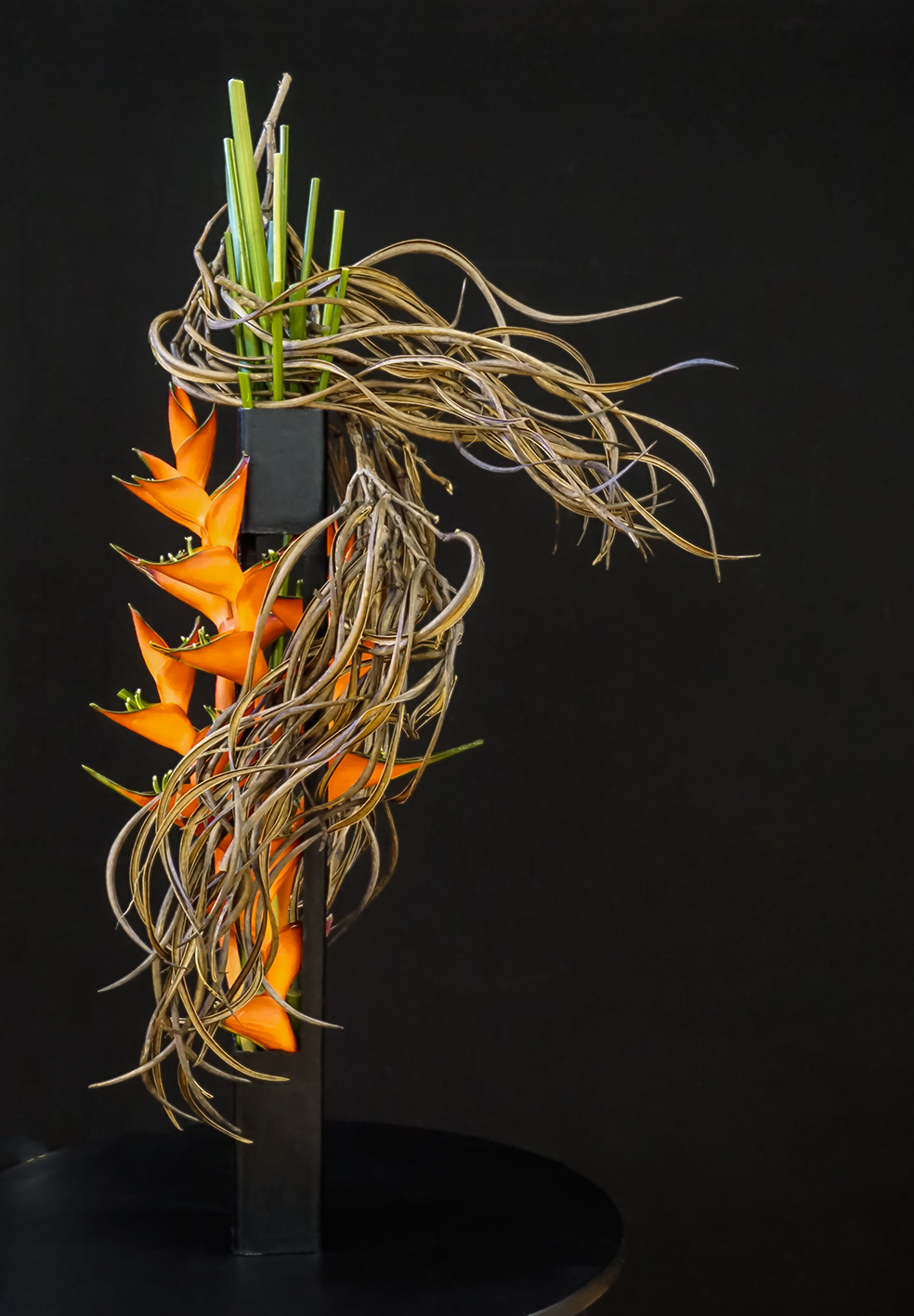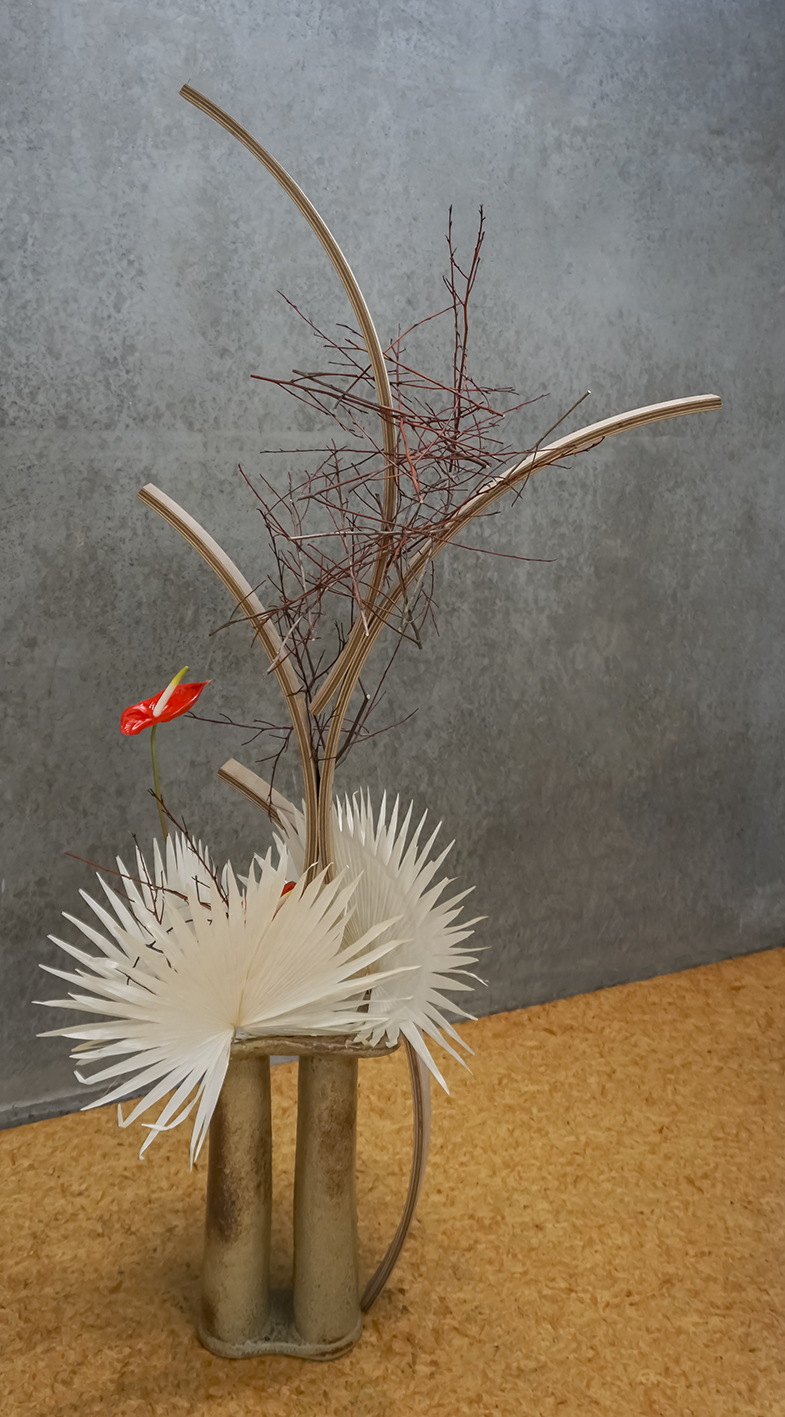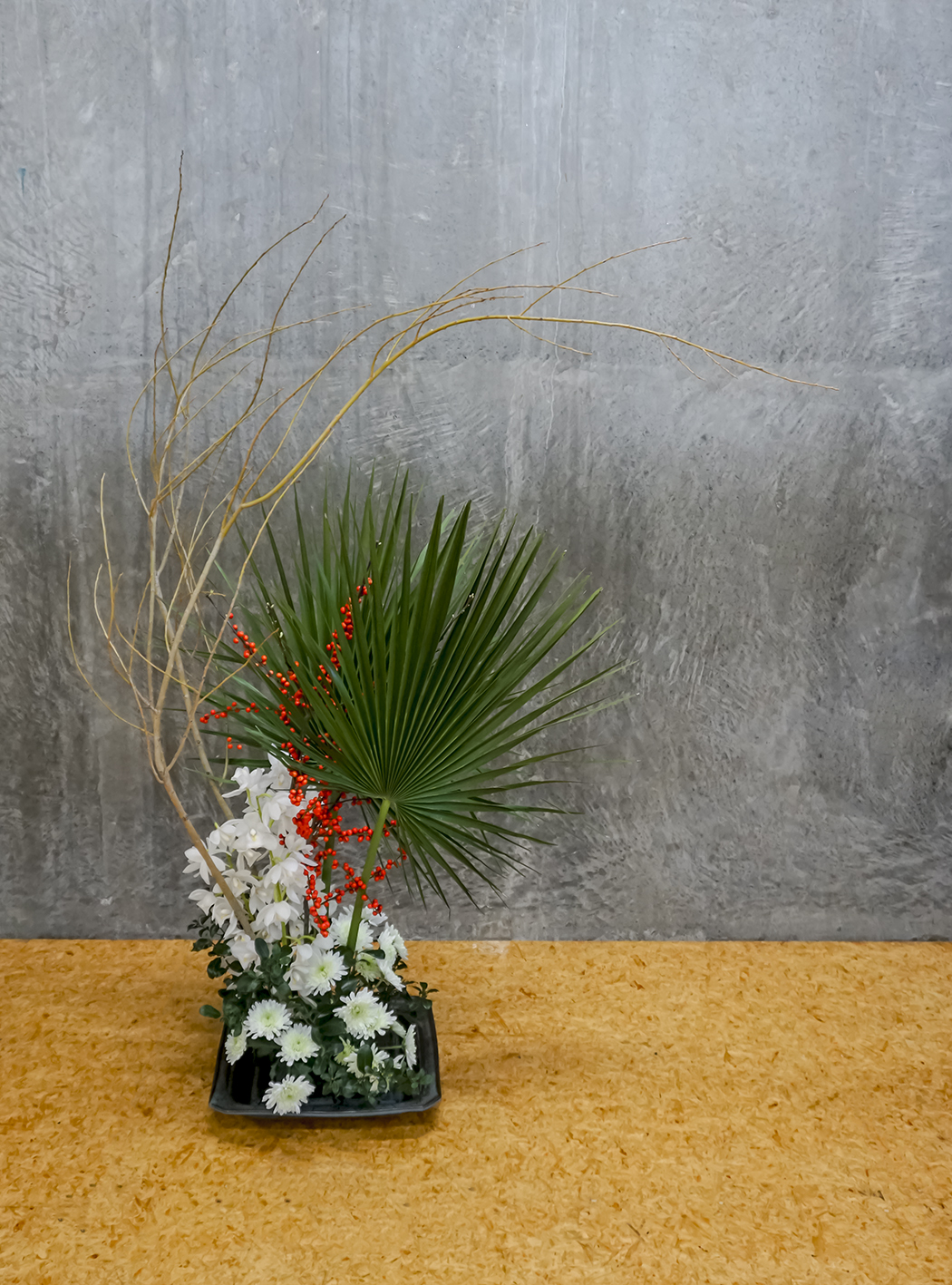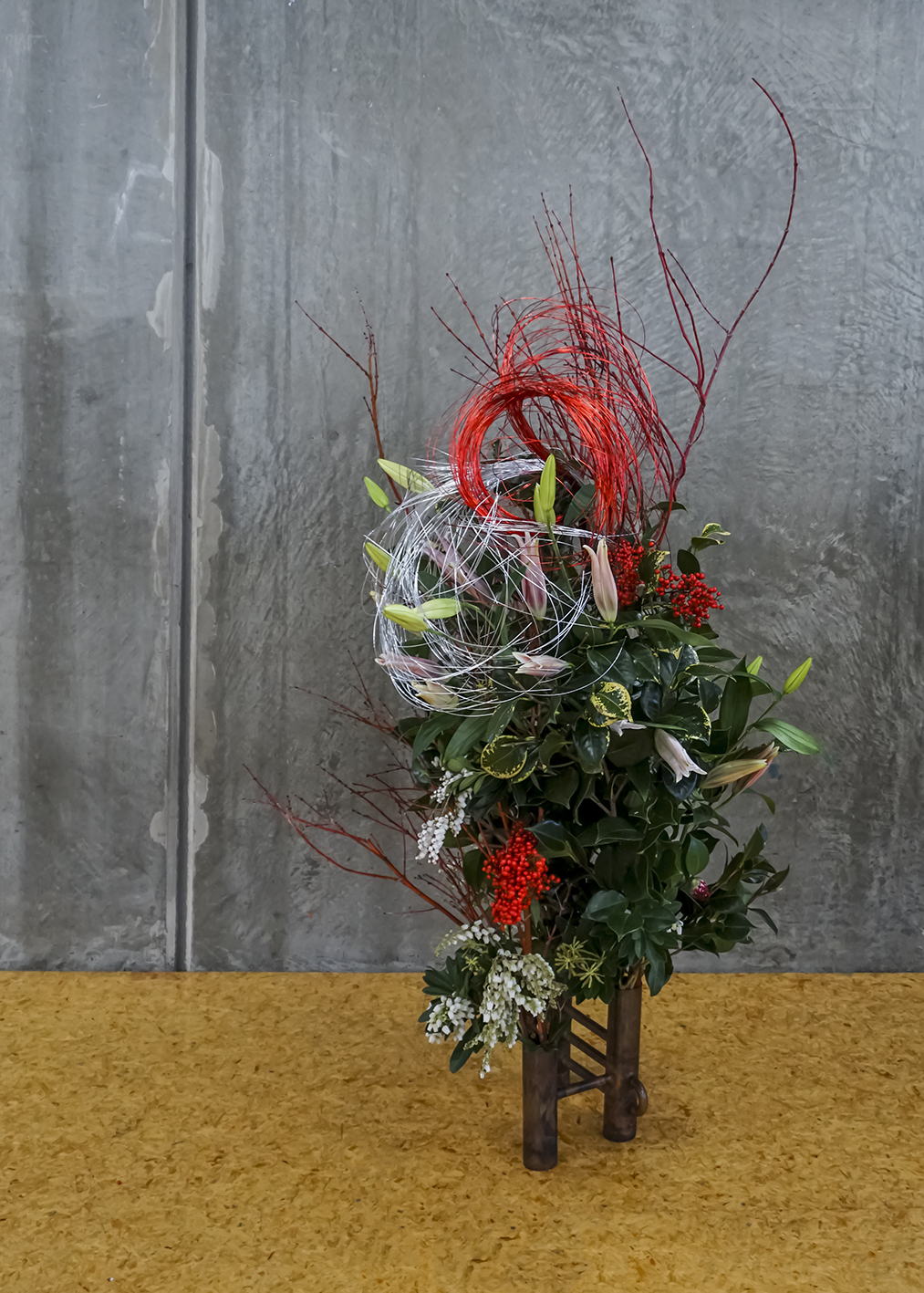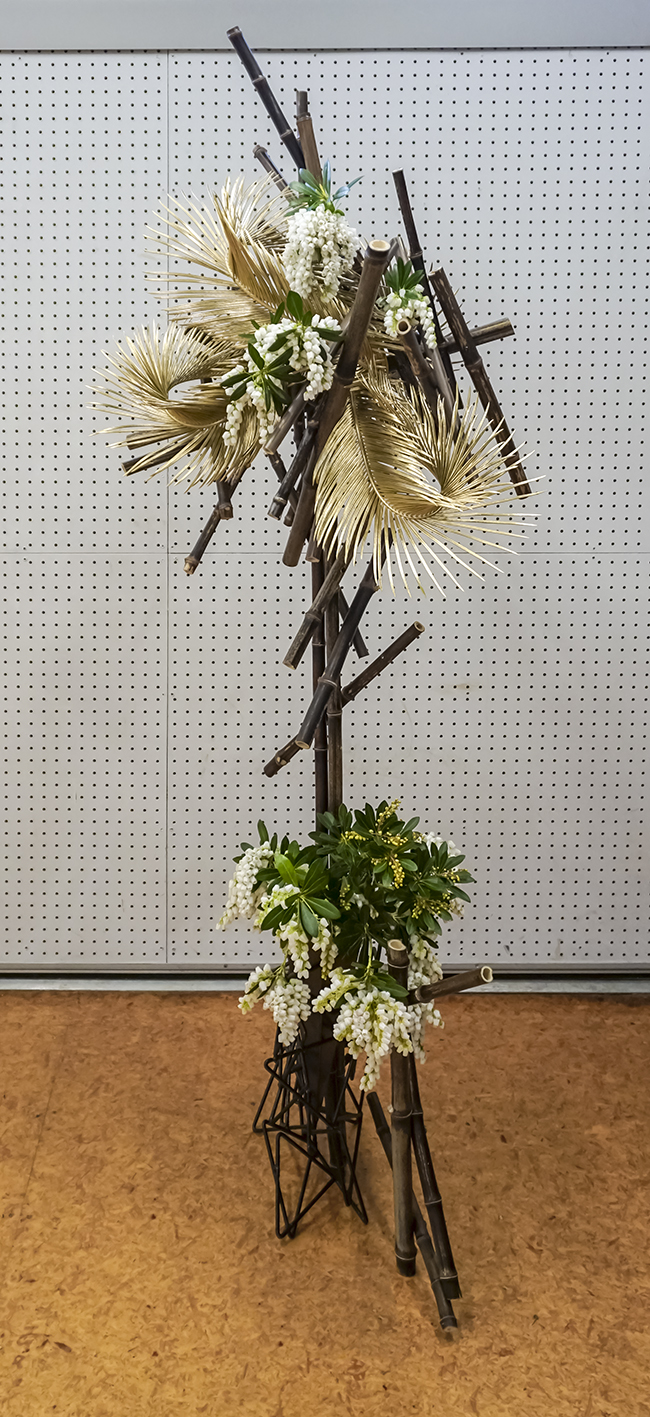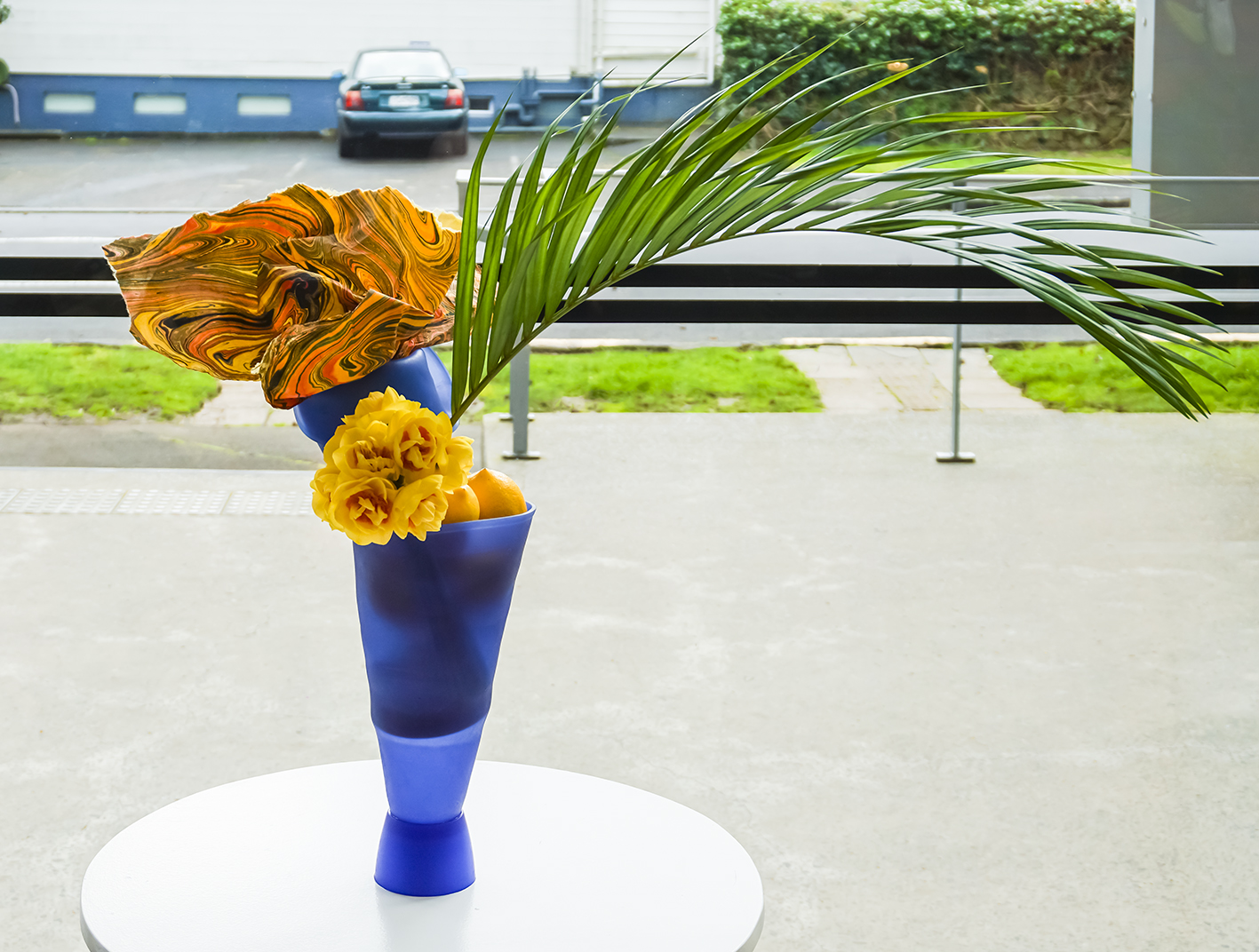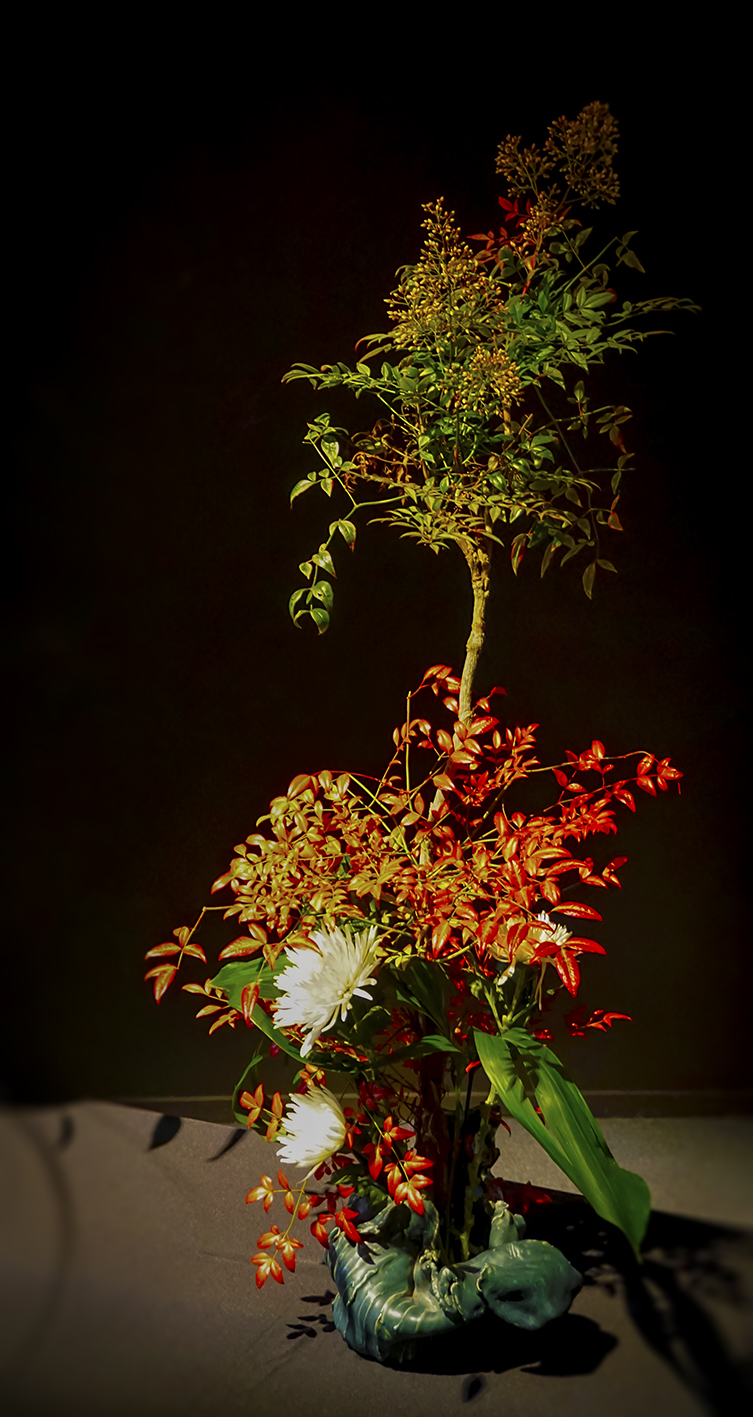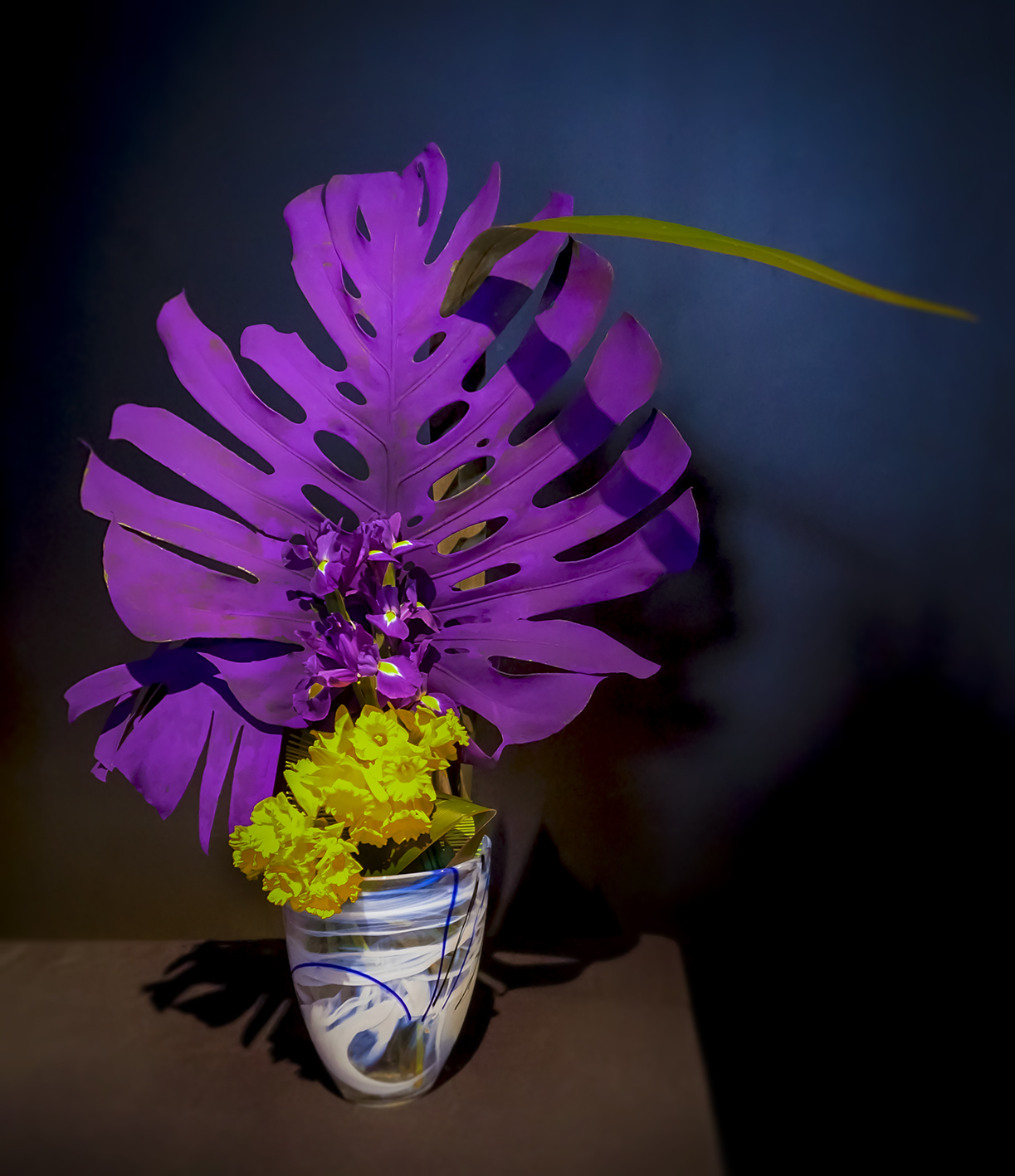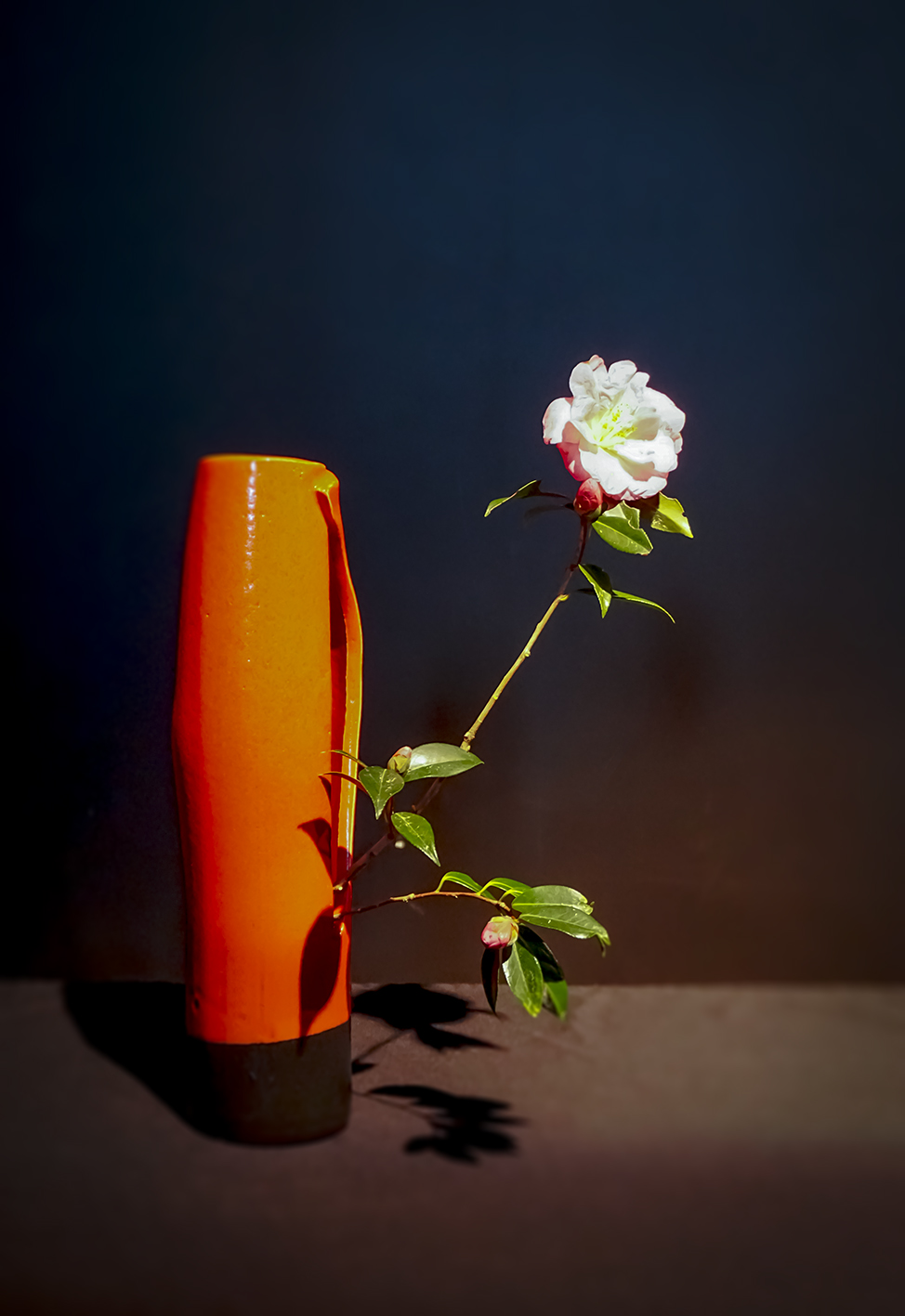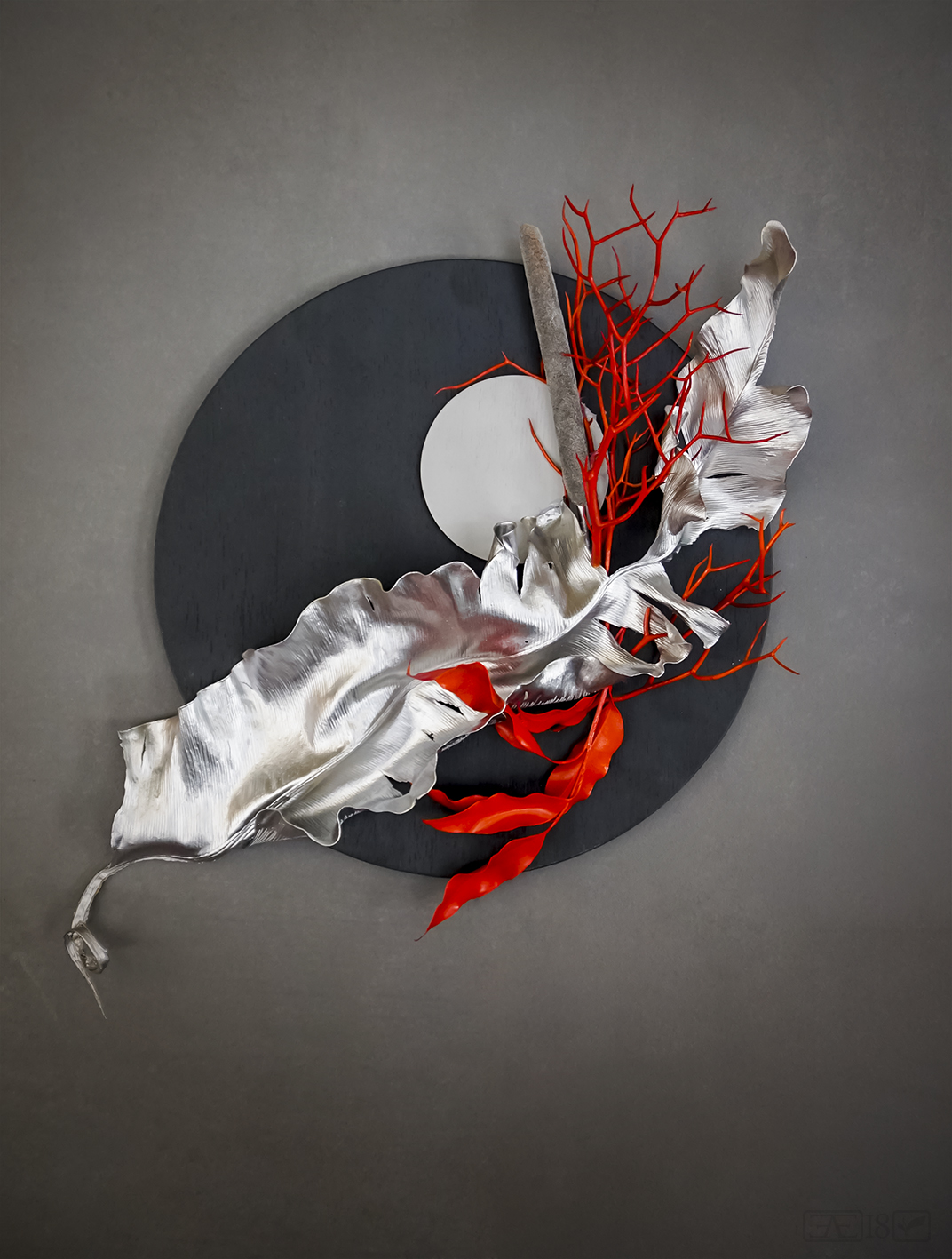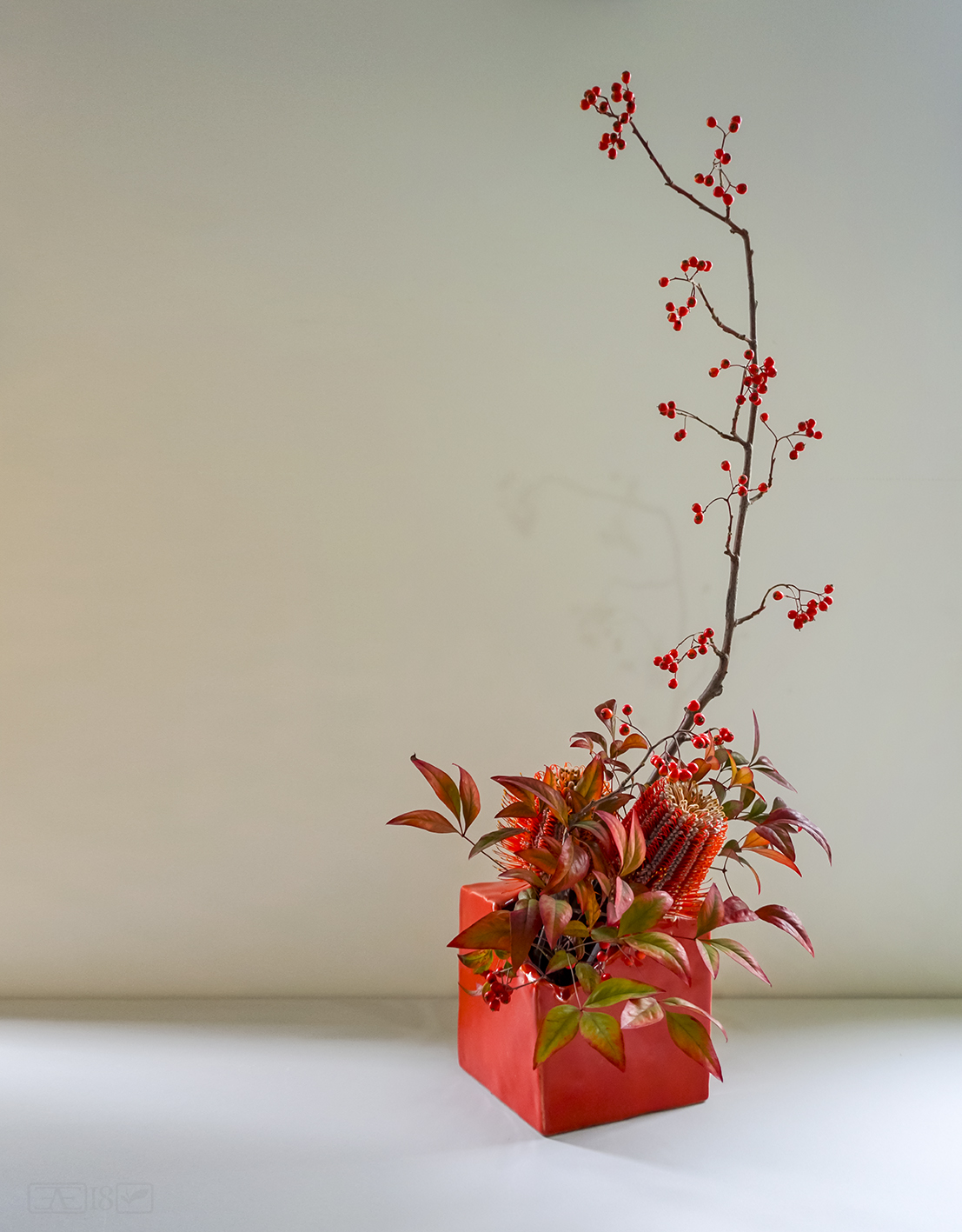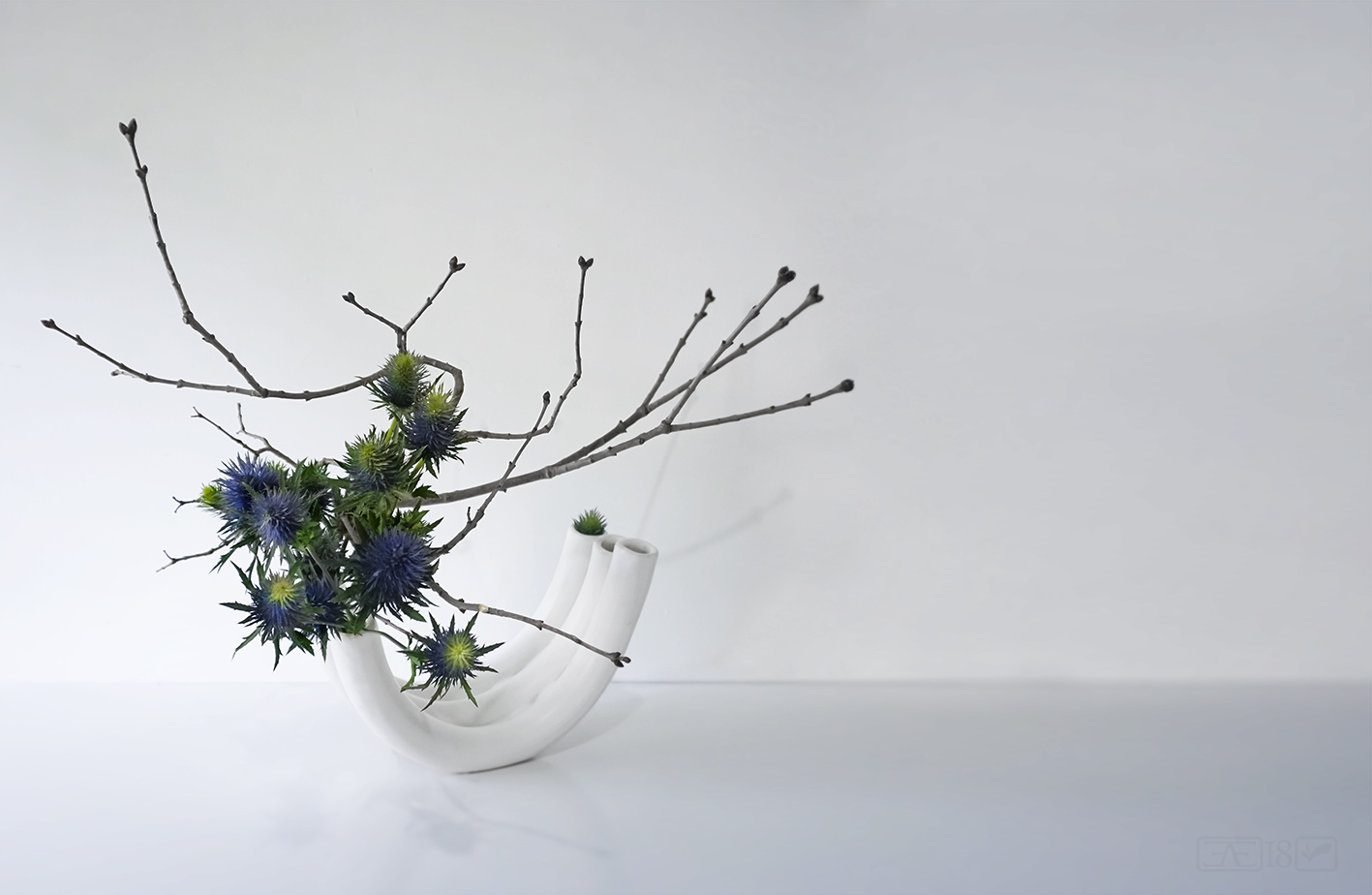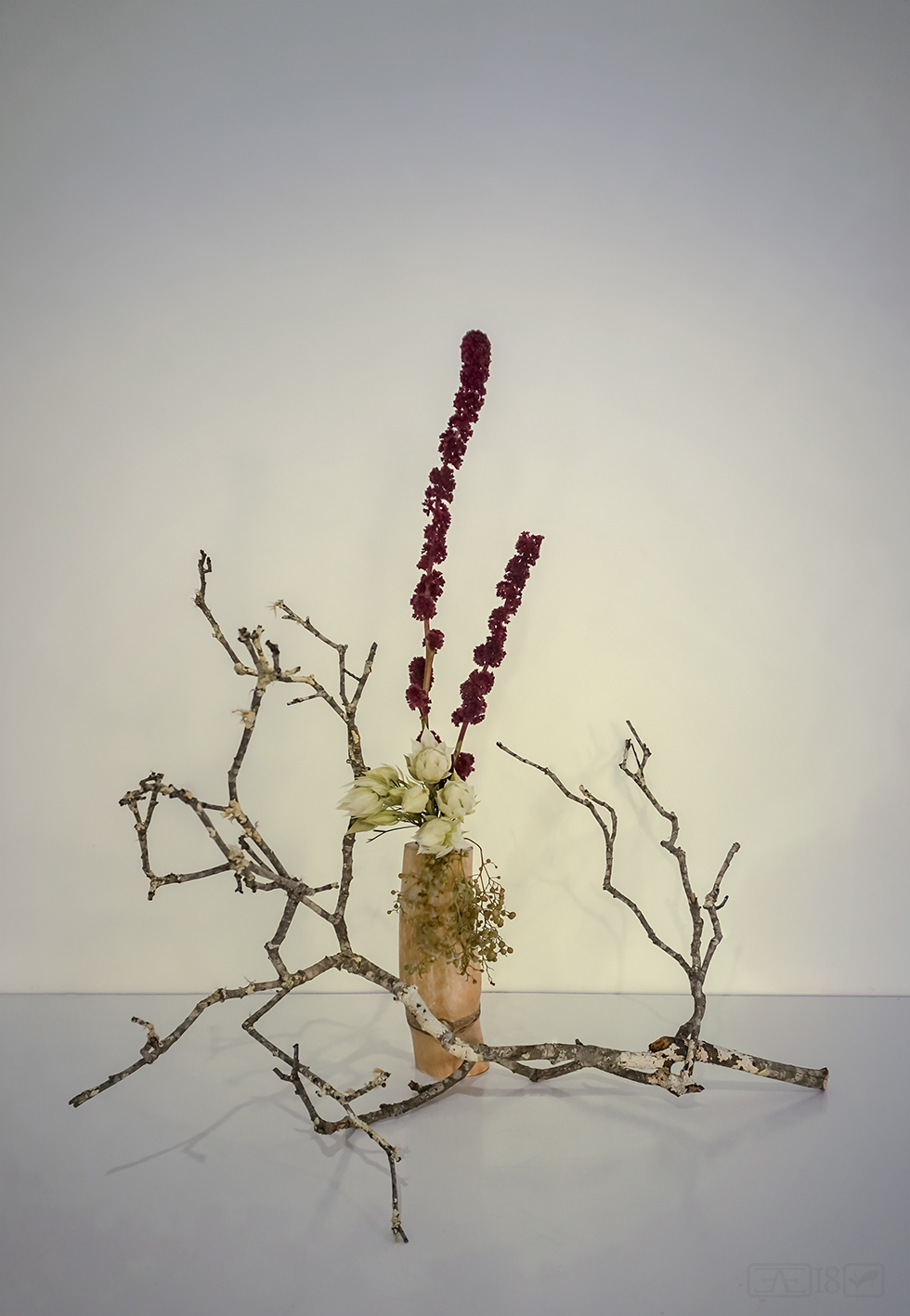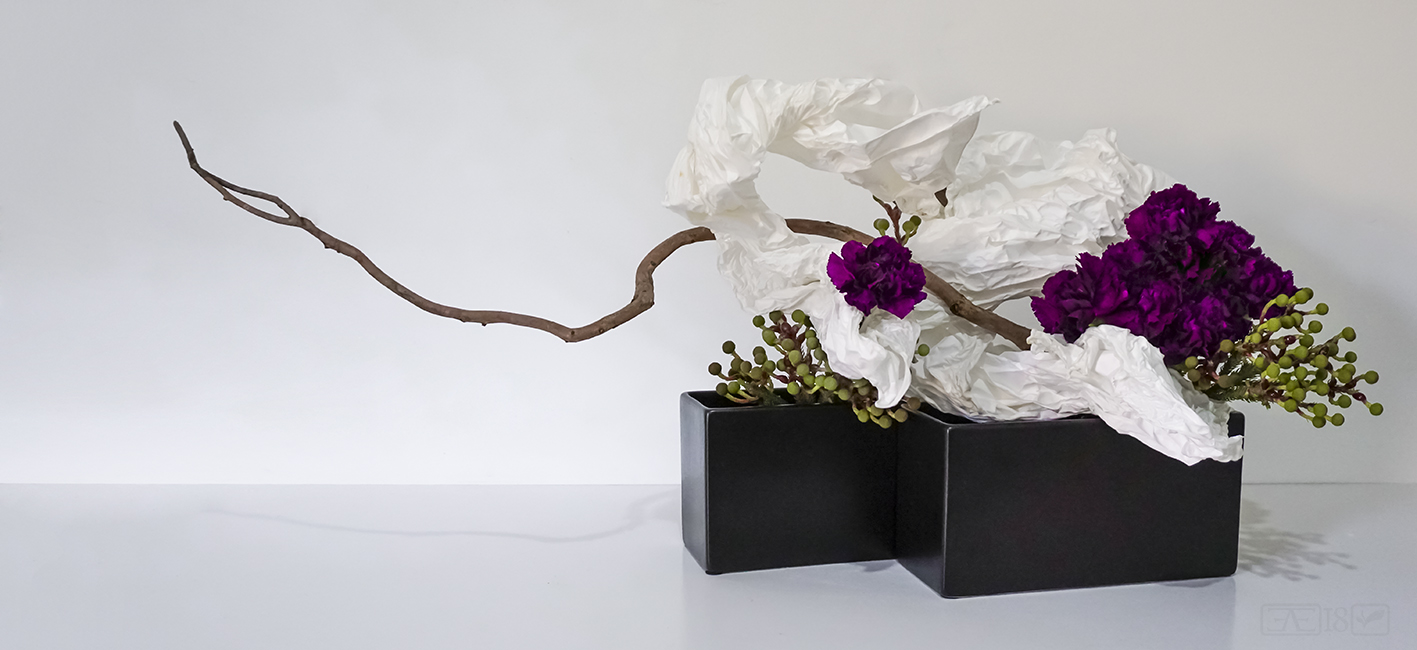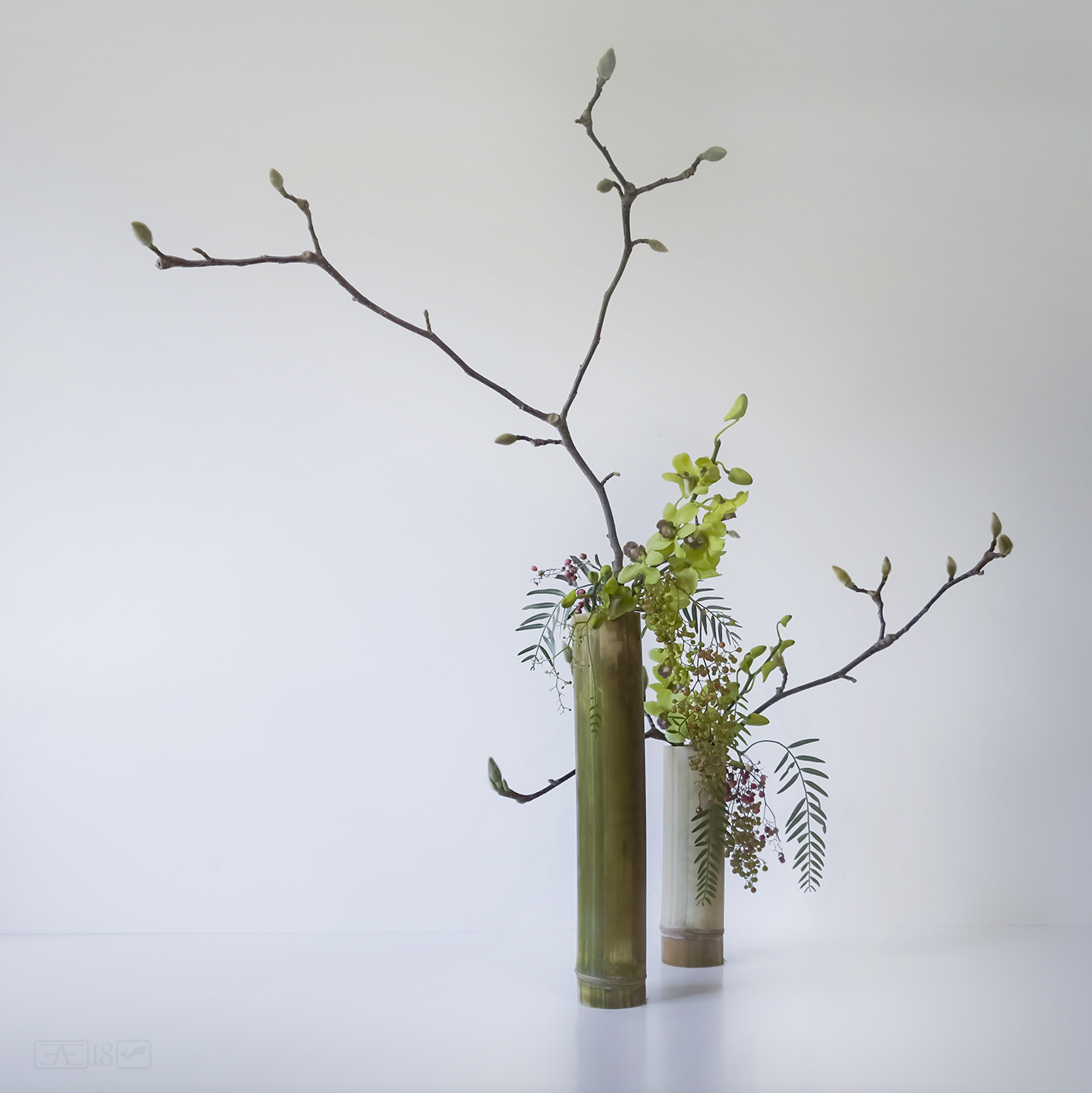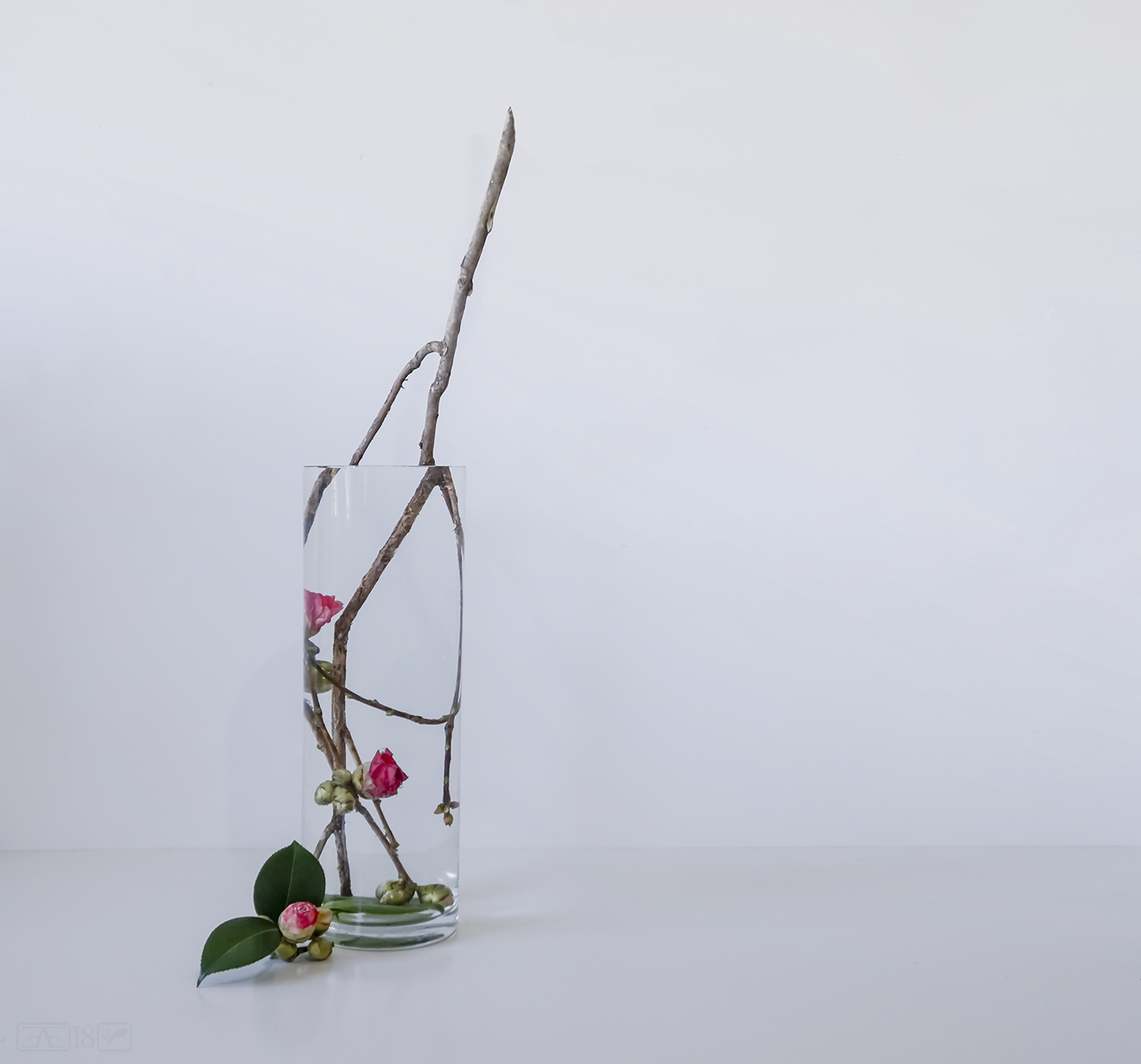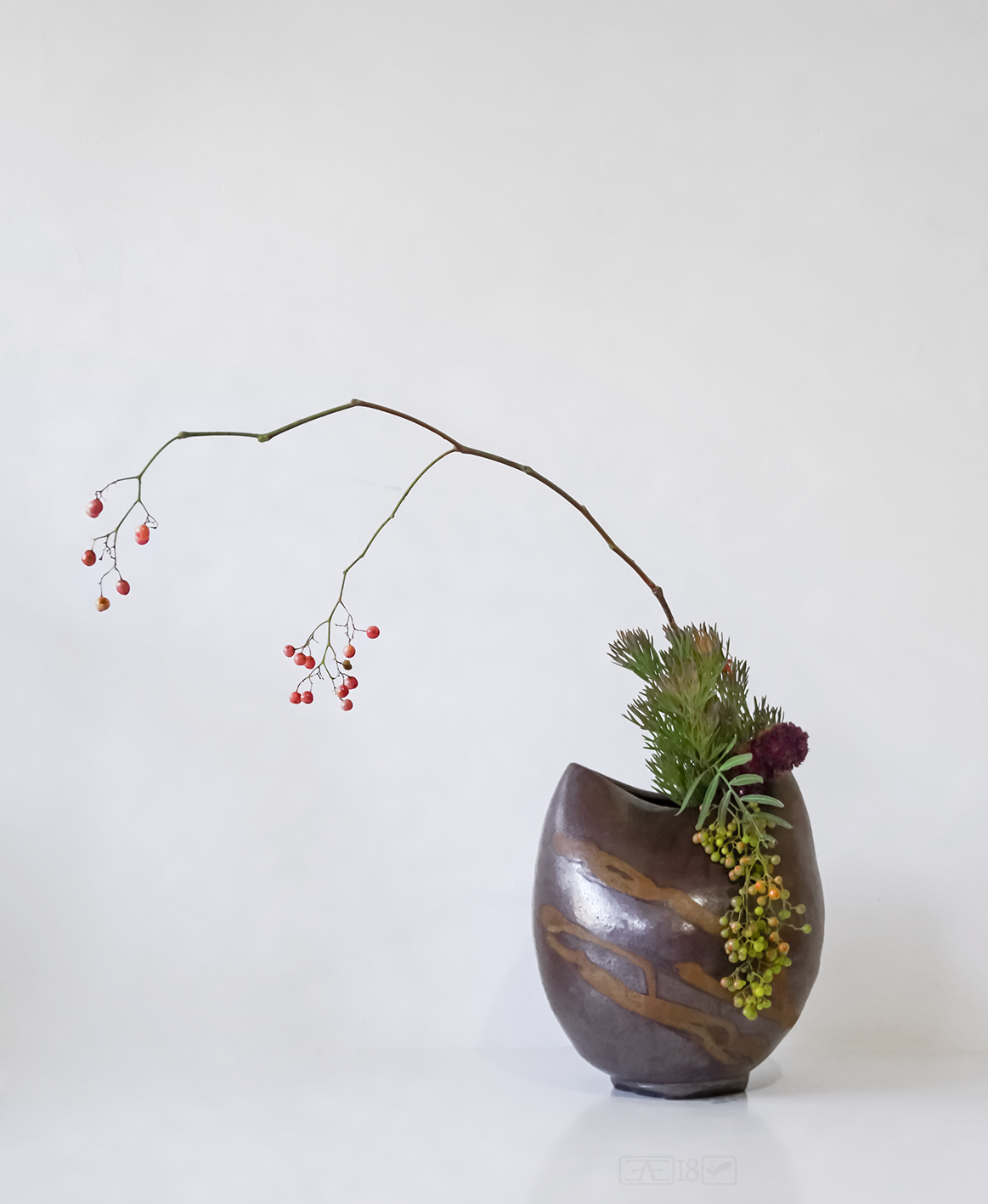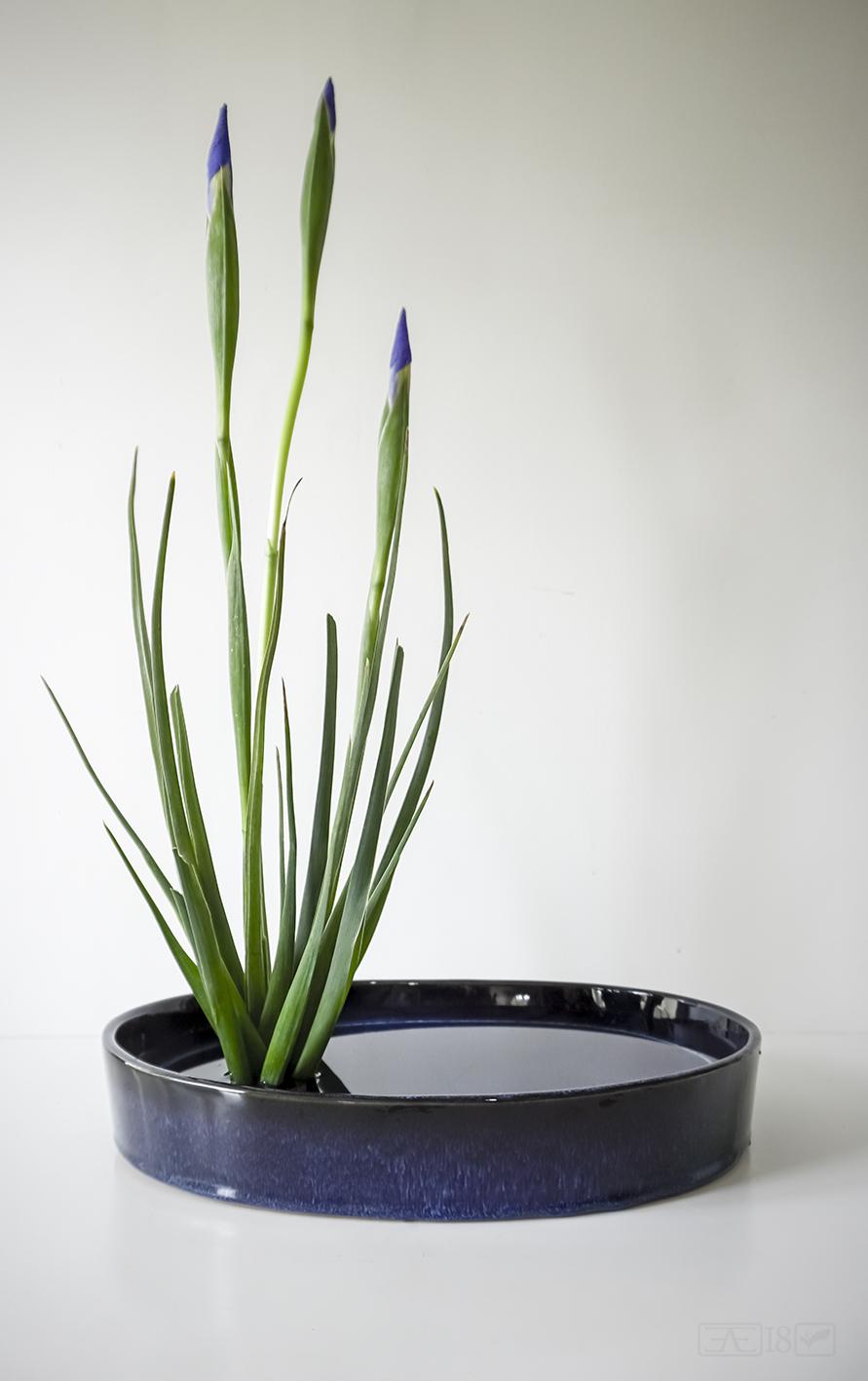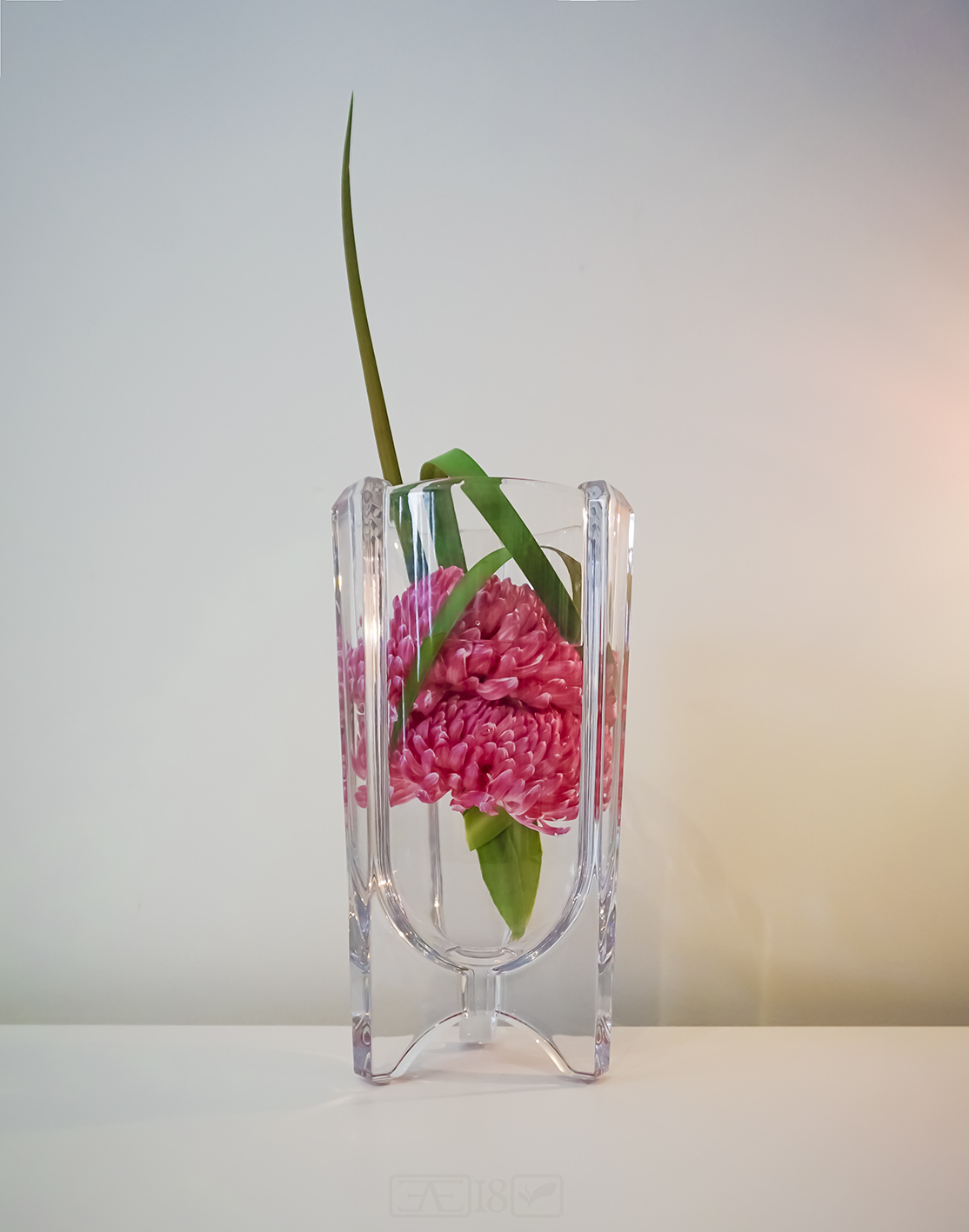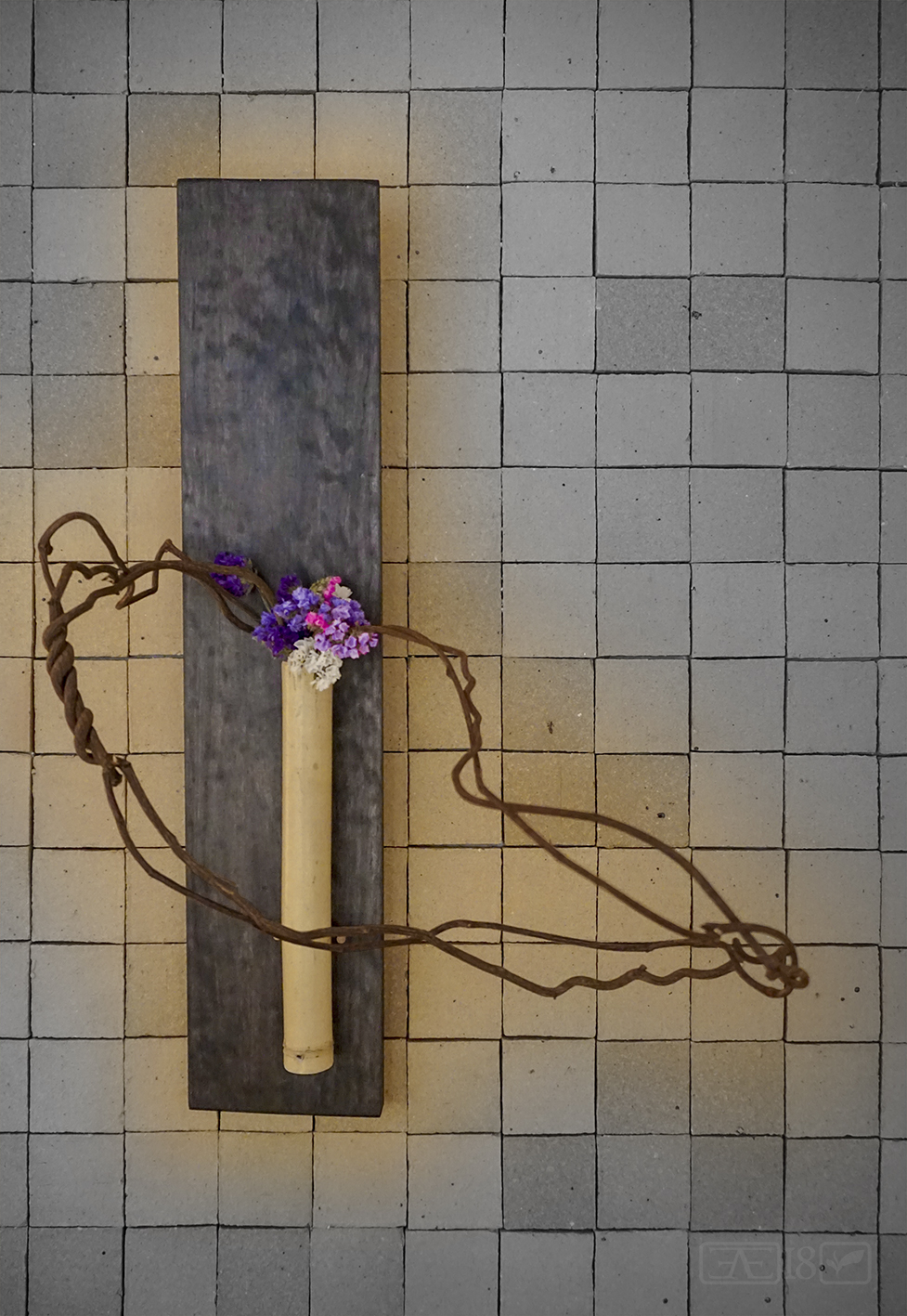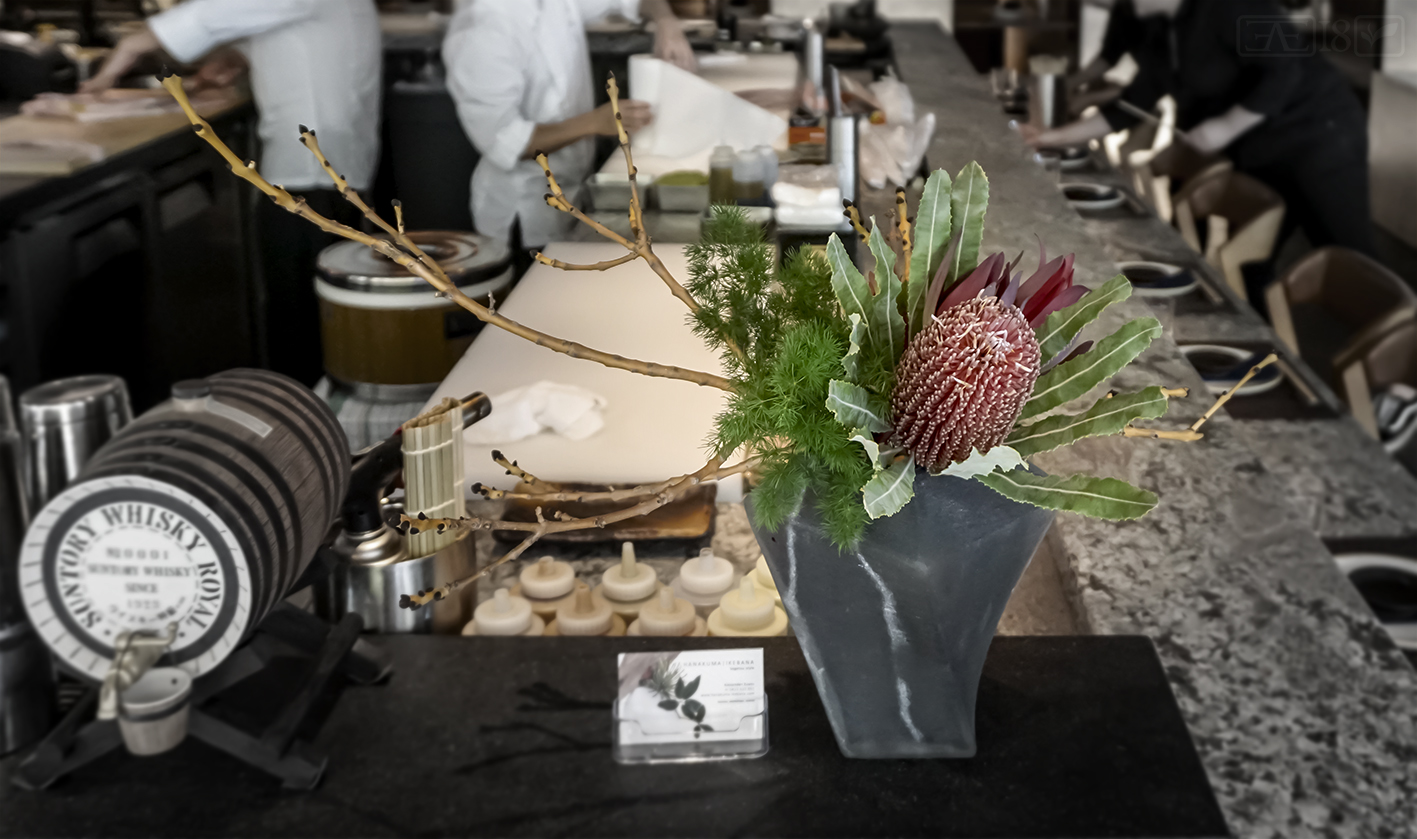Recently I had the good fortune to be able to attend an event in Auckland which was in celebration of the 50th year of Sogetsu Ikebana in New Zealand. There was an exhibition, demonstrations by Master Ken Katayama, who was visiting from Sogetsu Headquarters in Japan and there were also two days of workshops. Overall it was a fantastic experience, I participated in the exhibition and enjoyed both days of the workshops. The venues in which the exhibition and demonstrations as well as the workshops were held were excellent and the organisation by the members of Auckland branch was very professional indeed. The whole affair was very impressive.
I’ve included some photos of the exhibition arrangements below, though not all works are shown. This is because in some details and other arrangements in the background made it challenging to show some arrangements to their best. These arrangements are by participants in the exhibition who came from all over the world. (I will show mine separately so as to avoid confusion.)
The following gallery shows a selection of some of the demonstration works by Master Ken Katayama. Again not all of the works are shown due to having visual elements or distractions in the background.
Last but not least is my work from the exhibition, which was the only miniature arrangement. I feel that being the only miniature made it stand out and engage the audience in a different way. It invited them to come close to see what it was about. My feeling is this was a good thing as it made my piece memorable.

